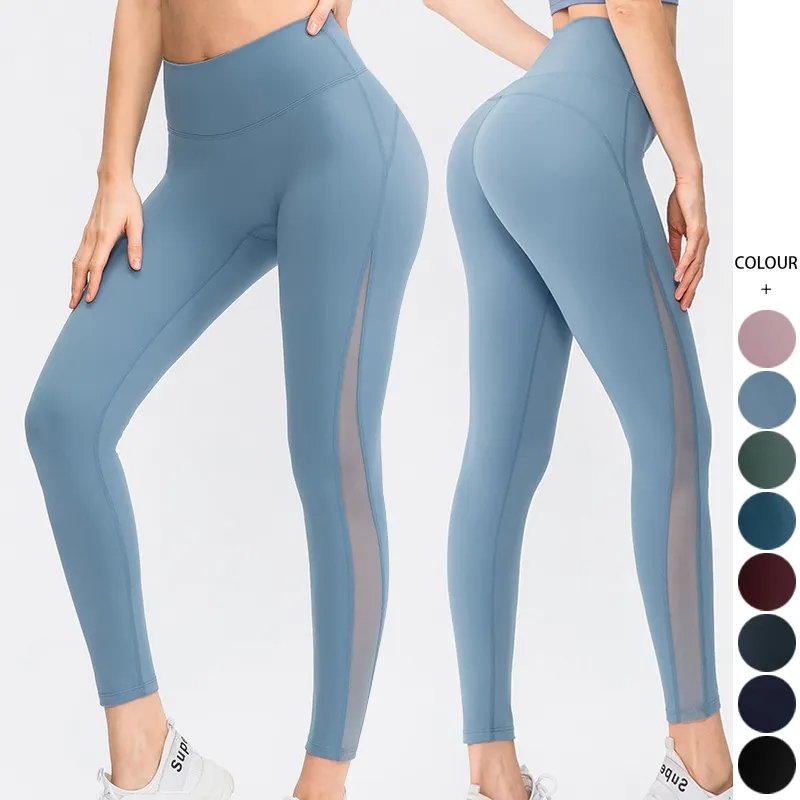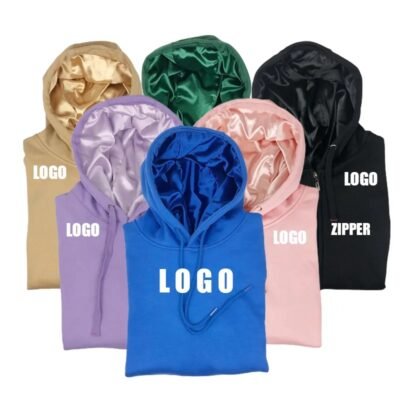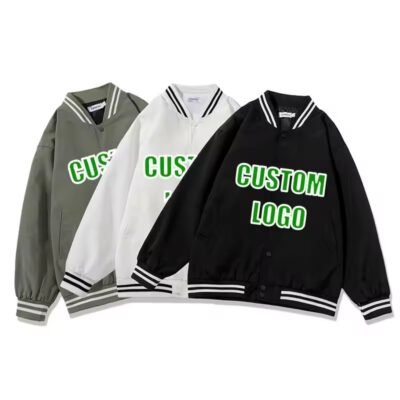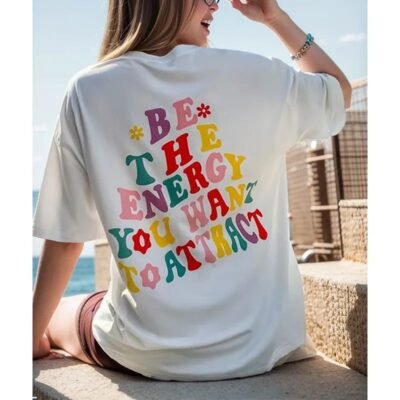We all are surrounding ourselves with activewear and yoga wear – even if you are not an athlete or a yogi – because these pieces have slowly become a staple in all of our wardrobes as more and more people gravitate towards comfort, style and performance in their clothing. The history, importance, and forecast trends of activewear and yoga wear are examined in this article to help consumers understand more and indicate how manufacturers and suppliers play a significant role in the industry.

Activewear & Yoga Wear
1.1 Historical Overview
Ath-leisure as we now know it took an entire century to morph into what it is today. In the beginning, sportswear was simply about function – what athletes need to function at their best. Not to mention that cotton and wool were the main materials of those socks, they were vigorous and durable items but not that comfortable and pliable.
The 1970s ushered in the fitness movement as we now know it. Suddenly people started to care about the performance of the sportswear, and as well how it looked and felt. Polyester and spandex were a beneficial introduction & they allowed for more flexibility, wick moisture, and were durable.
Yoga clothes have much older origins on the other hand. Yoga, a 5,000-year-old practice with roots in India, was historically practiced in simple, breathable cotton. However, its Western popularization in the late 20th century drastically transformed yoga attire. This is what made the modern day yoga wear – comfortable, dynamic, and stylish!
1.2 Activewear and Yoga Wear Today
Current day activewear and yogawear have evolved to be as much about performance as they are about making a statement. With the increasing popularity of athleisure, these clothes are made to wear inside and outside the gym, merging functionality with chicness. Brands are innovating with fabrics, design, and more sustainable options.
The Story of Fabric Innovation: The Core of Today Activewear and Yoga Wear
2.1 Technical Fabrics
Fabric: Fabric plays a huge role in activewear and yoga wear. Developed by manufacturers, a number of technical fabrics have been created to help increase one’s performance and comfort A few of the more common ones are:
Polyester: Thanks to its lightweight, durable, and moisture-wicking properties, polyester is one of the most commonly used materials in activewear.
Nylon: Soft and durable, also it is often mixed with other fibers to add some elasticity.
Spandex (Lycra): This has a very good stretch, mostly used for yoga wear and garments where a lot of stretch is required to move.
Bamboo – Bamboo fabric is eco friendly, and great for yoga because of its natural antibacterial and moisture wicking properties.
Merino Wool: Used often in cold-weather gear, merino wool’s natural breathability and moisture-wicking properties have gained visibility in activewear.
2.2 Sustainability in Fabrics
Sustainability: As environmental responsibility becomes more prevalent (and necessary), sustainability has been at the forefront of fabric innovation. Increasing popularity of recycled polyester, organic cotton, biodegradable materials. Leading manufacturers are prioritizing eco-friendly production with reduced water and chemical use, and fair labor practices.
Activewear Design & Functionality: Built With Everyone in Mind
3.1 Ergonomic Design
The design of activewear and yoga wear is not focused just around looks. Ergonomic design centres around the garments improving natural movement and minimising the injury factor. Key features include:
Flatlock Seams: These are seams that are set flat against the surface of the garment to help provide greater comfort and prevent chafing or uncomfortable rubbing.
Gussets: Gusset is an additional piece of fabric, especially in the underarms and crotch, that allows for more flexible and comfortable movement.
Articulated Knees and Elbows – Designs that allow your body to move without being uncomfortable.
3.2 Versatility and Style
The athleisure trend has seen the realms of active wear and leisure wear fuse. It has a modern design to it and is versatile to the point that you can go right to the gym without having to change or feel like a loser wearing all of Lululemon to the social places you go. Popular styles include:
Leggings: High-waisted leggings that have compression are needed for fitness and yoga, in addition to provide support as shapes.
Sports bras, a staple of the show, offer various support levels and double as crop tops for versatile wear.
Trackies and Joggers and Sweatpants: These went from simple lounge pants to trendy, but useful enough wear for both working out or being inside at home.
Activewear Manufacturers & Suppliers Play a Crucial Role
4.2 Quality Control and Innovation
Without the help of Manufacturers and Suppliers, the activewear and yoga wear industry cannot survive. We have worked closely with our factory to develop a quality control process and make certain each garment meets our high standards for durability, comfort, and performance. High-tech fabrics and their applications are a consequence of innovation, mainly from companies who invest in research and development.
4.2 Customization & Branding
CustomizationCustomized footwear is a trend on the rise as manufacturers are offering bespoke services (to) those brands wishing to create exclusive collections. Customization of fabric, type, print, design, and branding offers a crucial differentiator in the crowded activewear market, allowing brands to stand out with unique and bespoke options.
4.3 Ethical Manufacturing
The consumers increasingly value and put more focus on the ethical manufacturing processes that a brand is coupled with, and apart from just overlooking whether the prices are going down or up or whether the trends are in or going out. Reputable suppliers follow good labor practices that include safe working conditions and wages. Another key aspect is the transparency of the supply chain, whereby many manufacturers cite a variety of details on how the products are produced.
Trends in the market and future prospects
5.1 The Growth of Athleisure
A trend towards health and wellness due to generations y and z has propelled athleisure to become one of the dominant categories. The trend is reflective of consumers’ desire for clothes which allow them to move, yet are stylish enough for casual wear.
5.2 The Role of Technological Advancement
Smart fabrics like textiles with built-in sensors are evolving. We are talking about contemporary pieces of clothing which can check activities, heartbeat rate and different details conveying immediate ascertain to the user.
5.3 Sustainability
Sustainability: to continue working on reducing production’s environmental burden. This extends to everything from the materials used (their recycled fibres, eco-friendly inks and energy efficient manufacturing methods) through to how the brand is run (their carbon offset, and dedication to positively impacting the environment, their employees and the society they serve.)
Practical Tips for Consumers
6.1 How to Pick the Right Activewear
Tracking is also becoming more popular with activewear – therefore, when you are shopping for workout apparel, there are some key components to consider such as:
Type of Activity: Each activity requires some features. Active wear like yoga wear needs to be flexible, gym gear has to be breathable and moisture-wicking and running wear would have all of the above.
Fit and Comfort- The first and foremost thing is that the garment should fit you well and comfortable. Look for addenda such as flatlock seams and gussets for added comfort.
Utility: select materials that work best for you When it comes to performance attire, a rule of thumb is to wear synthetic fibers (such as polyester or nylon) for high-intensity workouts and natural fibers (like bamboo) for low-impact exercises.
6.2 Care for Your Activewear
Regular care increases the longevity of your activewear. Follow these tips:
Wash with care: On gentle cycle with cold water; fabric softeners can ruin technical fabrics
The dryer is the enemy of synthetic fibers, therefore air dryingDrawer:__).
Includes proper storage: Store your activewear in a cool, dry place – and do not fold those with elastic bands (as it may overstretch, break or lose strength).
Conclusion
From high fashion to street wear to LA active and yoga wear, this category is even more rareified than the spiritual boho set – and more egalitarian as well. Producers and suppliers are working to cater to this trend, so variety in plant-based and clean products will continue to rise across the food and beverage market as a whole. Consumers can select the right garments to fit their active lifestyles by knowing the evolution of apparel, fabric technology, design principles, and what is happening in the marketplace.









